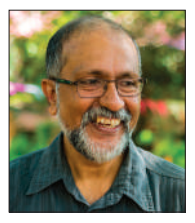
In a fortnight when the media, politics, and healthcare got tangled up in one of Goa’s biggest controversies in a while, it’s tempting – though maybe a bit risky – to ask: where is Goa’s media headed?
Our press, like in the rest of India, faces a number of challenges. We no longer labour under the illusion that "our newspapers are booming". This was the view we took till a few years back, when it seemed that the media in our part of the world was growing and thriving, unlike the situation elsewhere in the world.
Then came the pandemic. It exposed the Fourth Estate's weaknesses. Papers could not be circulated. News collection was a challenge. Work-from-home caused dislocations. Even the economics seemed broken.
Issues confronting media
From a news-reader's perspective, the issues are many: trust, relevance, accessibility, representation. With the info domain becoming more noisier and more polarised, readers admittedly face their own frustrations with the media.
Official radio news is focussed on government news with a vengeance, though autonomy was promised decades ago. TV channels look like clones of one another, and news coverage is superficial. Community radio has nowhere grown like it was expected to. Journalism students find TV jobs glamorous. But it is print which still undertakes much of our news gathering, in more affordable ways, and this makes it important.
But there's another reality too. Growing advertisement dependence, a trend since at least the 1990s, has made newspapers seem less reader-friendly or neutral.
Media accountability
There is a lack of media accountability. Transparency, or grievance redress, is conducted at a very limited level. This is true when the media makes errors, publishes biased pieces or selectively covers issues and events. As technology changes and work pressures increase – though this cannot be an alibi – there has been increasing signs of spelling errors, unverified news, and opinion masquerading as fact.
In competition with the online (and social) media, the newspapers need to somehow avoid staleness and repetition. Not an easy task, this. It's also linked with changes in technology, over which the media might itself have no control.
Doing away with formulaic
It is time to completely do away with the formulaic. This comes in the form of press releases, ribbon-cutting events, or government announcements that still dominate pages. To be fair, one needs to recognise here that news-collation is a costly affair, and print media revenues have also been under pressure.
Local stories have been getting growing importance, but not enough. Issues which affect the average Goan – rural distress, public transport struggles, caste dynamics, school issues – still get very little space in ways that matter. Then, there's weak follow-up even on big scandals or impactful stories. For this, we are all responsible.
Marginalised voices need to be amplified by the media. This is true in the case of working-class Goans, non-affluent minorities, migrants, and the rural or urban poor.
Overdose of politics
For ages now, our media has been giving readers an overdose of politics. Do readers need to be force-fed with the superficialities of party politics, that too minus the real substance? Readers have shown signs of getting fatigued by repeated coverage of political gossip, superficial coverage of defections, and power-play with little analysis of policy or governance. As some national initiatives have shown, a lot more could be done by way of backgrounders and explainers. This helps us understand issues in greater depth.
Our media has seen a shift to digital. But there is a need for greater access to the news. Thankfully, in Goa, few publications have erected paywalls to their content. Conversely, readers, in their own long-term interests too, need to consider where the resources for content-generation will come from.
Misinformation, sensationalism
The rise of misinformation is a major challenge of our time. Social media forwards (some mischievously creating fake narratives, even with seemingly no clear purpose at times) is a challenge of its own. Readers struggle to know which sources to trust. While small media operations have mushroomed, at least a few of these come with hidden agendas and dubious support (even political).
Sensationalism over substance is another challenge. More so in times when newspapers are tempted to mimic tabloid-style reporting. Clickbait headlines triumph over accuracy.
Goa's multilingual nature is yet to be recognised by its media. It is true that a few, tentative steps have been undertaken to have news in more than one language (with Romi Konkani pages, or temporarily a Portuguese page once in awhile). Given the walls that exist between readers, it might be a useful idea to carry a brief summary of stories and views from the Marathi, or Devanagari Konkani press, in the English-language newspapers too. The near eclipse of Romi Konkani from the Press is also a matter of concern. This leaves entire reader groups out in the cold.
Catering to young readers
Catering to young readers, giving them issues they need (student issues, cultural shifts, youth entrepreneurship, or digital information) is an easy-to-recognise, but hard-to-implement need. Greater reader engagement could help. So would community building (reflecting on reader lives via dialogue, not one-way top-down reporting). Greater public interest journalism could change the nature of our media.
Journalism needs to be credible, locally rooted, inclusive (including linguistically), and brave enough to challenge power. Any media house that responds to such needs can build a lasting brand of loyal readers.